New mysteries always seem to be popping up in the quest for information on Josef Jakobs and the other World War 2 spies who arrived in England on behalf of Germany. The recent interest, both on this blog, and in the news about Engelbertus Fukken (alias Jan Willem Ter Braak) has led me down some interesting byways. Is there a possibility that Jan Willem did get some messages sent to the Germans?
Hamburg Messages
When Josef was interrogated at Camp 020, he told the officers that, during his training in Hamburg, in the Fall of 1940, he had been shown some agent messages by Boeckel (alias Dr. BEYER or BRUHNS). Josef said that Boeckel showed him the messages in order to demonstrate how they wanted the messages sent. According to Boeckel, these messages originated with their agents in England and had been sent to Germany via wireless transmitter. Josef recalled the contents of five of those messages and shared them with the Camp 020 officers.
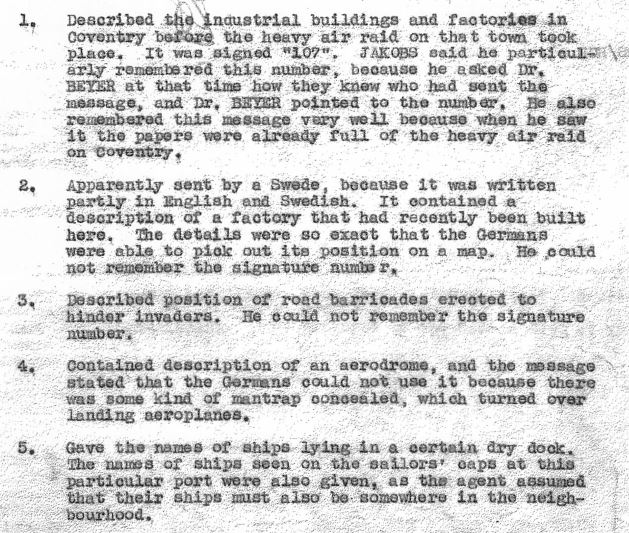
The messages were as follows:
- Described the industrial buildings and factories in Coventry before the heavy air raid on that town took place. [the worst bombing took place on the evening of 14 November 1940] It was signed “107” [the agent number]. JAKOBS said he particularly remembered this number, because he asked Dr. BEYER at that time how they knew who had sent the message, and Dr. BEYER pointed to the number. He also remembered this message very well because when he saw it the papers were already full of the heavy air raid in Coventry.
- Apparently sent by a Swede, because it was written partly in English and Swedish. It contained a description of a factory that had recently been built here. The details were so exact that the Germans were able to pick out its position on a map. He could not remember the signature number.
- Described position of road barricades erected to hinder invaders. He could not remember the signature number.
- Contained descriptions of an aerodrome, and the message stated that the Germans could not use it because there was some kind of man-trap concealed , which turned over landing aeroplanes.
- Gave the names of ships lying in a certain dry dock. The names of ships seen on the sailors’ caps at this particular port were also given, as the agent assumed that their ships must also be somewhere in the neighbourhood.
These messages naturally caused quite a stir at Camp 020 and within the Double-Cross system at large. Did all of these messages match up with MI5s double agents who had been transmitting information to the Germans?
Tracing the Hamburg Messages
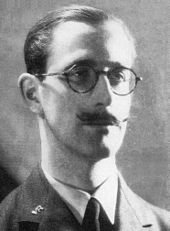
In early July 1941, Flight Lieutenant Charles Cholmondeley (pronounced “Chumley”) conducted a thorough search of all the wireless transmissions that had been sent to Germany by MI5’s stable of double-agents. Cholmondeley wrote a report which stated that, “having checked over the traffic, I find that we have no claim to Nos. 1 and 4. However 2, 3 and 5 may possibly have emanated from SUMMER and TATE”.
Before we get into the three messages that Cholmondeley connected to SUMMER and TATE, it is helpful to remember that SUMMER (the Swede, Gösta Caroli) landed in the Northampton area and that, had he evaded capture, he was assigned to work in that general area. In his early transmission career with MI5, he transmitted from Aylesbury and later, from Hinxton Grange.
Transmission #2
The second message that Josef remembered was:
2. Apparently sent by a Swede, because it was written partly in English and Swedish. It contained a description of a factory that had recently been built here. The details were so exact that the Germans were able to pick out its position on a map. He could not remember the signature number.
Here is what Cholmondeley dug up from the records of SUMMER’s transmissions:
(2) 17 November 1940 by SUMMER [Gosta Caroli]
“Just back from Grantham.[A town in Lincolnshire, quite a ways outside of SUMMER’s “officially assigned” stomping grounds.] Location of the factory which you gave not correct as Factory site indicated by you is Aveling and Barford [a manufacturing company on the outskirts of Grantham] where light tanks with Ford V8 engines are manufactured. [They did actually make some tracked carriers with Ford engines.] Twenty m.m. aircraft cannon are being experimentally manufactured by the British Manufacturers and Research Co. [Another manufacturer, also known as BMARC. They did make 20 mm anti-aircraft cannons.] This factory is situated west of Barford [the other company] and west not east of the railway. [This is accurate, BMARC was on Springfield Road.] 2000 employed in three shifts. Mainly Bren guns are manufactured. Going Birmingham Monday. [It would seem that MI5 portrayed SUMMER as getting around quite a bit.]
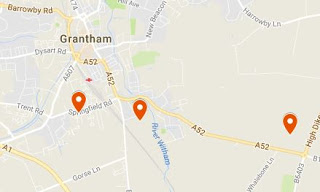
“Grantham Aerodrome is situated 2 km. south-east of the town, just before the road fork to Donnington. [Indeed it was. One can still see vague outlines of the airfield on Google satellite view.] It is built on top of a hill. It is said that it is invisible from 1000 m. up. There is one large and two small hangers 150 m. from the road. Entrances towards SSW adjoining NE of these are 6 hangars with entrances to the SSE. The landing field extends 1 km to the next cross-roads. 41 training planes and 5 Spitfires on field. No guards visible. Light Flak. NNE corner of the aerodrome.”
Transmission #5
Cholmondeley felt that the fifth message which Josef remembered could be linked up with another message from SUMMER. According to Josef, message 5:
5. Gave the names of ships lying in a certain dry dock. The names of ships seen on the sailors’ caps at this particular port were also given, as the agent assumed that their ships must also be somewhere in the neighbourhood.
The matching SUMMER transmission looked like this:
(5) 24 December 1940 by SUMMER [Gosta Caroli]
“Liverpool. In the town saw many sailors from HMS Sandwich [a Bridgewater class sloop launched in 1928] also from HMS Vernon [either a mine-laying tender HMS Skylark renamed Vernon in 1938 or the Navy’s shore-based torpedo school called HMS Vernon] and HMS Australia [can’t find a WW2 ship of that name – HMAS Australia commissioned 1911 was scuttled in 1924]. Heavy AA reported to be mounted on many ships in port.

While the November transmission about Grantham makes sense and falls within the time frame where Josef would have been at Hamburg for training, the message about Liverpool is a bit of a stretch. Josef told the interrogators that he went home for Christmas and he only spent a few days in Hamburg in early January before being sent on to The Hague. In addition, Josef said that the first message, about the bombing in Coventry, stuck in his mind as the newspapers were full of details about the bombing. This would suggest Josef saw the messages after mid-November, but within a week or two of the Coventry bombing (November 14, 1940). A message sent by SUMMER on December 24 does not fit these parameters.
As a side note, MI5 must have had quite the cover story for SUMMER to justify such far afield trips as Grantham and Liverpool. Mind you, as it turns out, double agent CELERY (a.k.a. Walter Dicketts) and double agent BISCUIT (a.k.a. Sam McCarthy) also apparently visited Grantham in the fall of 1940 on behalf of SNOW. (referenced in West & Madoc as well as Hayward) There is also some evidence that CELERY or BISCUIT were also taking on “missions” on behalf of SUMMER. Mind you, I am not a SUMMER or TATE expert. Interesting that Cholmondeley did not mention CELERY, BISCUIT or SNOW… Oh what a tangled web…
Transmission #3
As for the third messages that Josef had seen, Cholmondeley figured that TATE or SUMMER was the most likely source for those. Josef said that the third message:
3. Described position of road barricades erected to hinder invaders. He could not remember the signature number.
Cholmondeley found a series of messages, dated late October to early November which could correspond with the message Josef had seen. The maps below shows the main points described in the six transmissions (TATE is reddish markers, SUMMER is orange markers). The cluster from SUMMER are for an area between London and Oxford. The cluster from TATE center on an area north of London, near Hendon, coincidentally very close to Karel Richter’s landing site (blue marker).
(3) 24 Oct 1940 – 25 Oct 1940 – 26 Oct 1940 by SUMMER [Gösta Caroli]
“Road blocks on all approached [approaches] to Thame. Searchlight and machine guns 5 km on the Thame-Aylesbury road near railway viaduct. Nearby in large field many obsolete cars to prevent landing. Strong road obstructions and tank stops of steel girders 2 km from Aylesbury and 400 m behind it there is a gun emplacement. I did not see any new airfields on the way.
“Main road between High Wycombe and Princes Risborough 1.5 km from Wycombe near the railway bridge, just past the fork to Oxford is a moveable barbed wire barrier. After passing the “Red Lion” at Bradenham there is, on the right side of the road, what I believe is as light A.A. gun emplacement. Close observation is not possible as there is a guard in the block house, but it looks as if a number of these emplacements extend round the hill on the right side of the road. On the road round the hill to Lacy Green and Speck (Speek)? I could see further road obstacles and gun emplacements.
“Details of locality refer to a journey along the main road from Thame to Aylesbury”.

TATE also reported on similar blockades, tank traps and pill boxes in a series of messages about the Hatfield/Hendon area north of London.TATE was ostensibly based in a rooming house in Barnett, so this makes sense.
(3) 30 Oct 1940 – 2 Nov 1940 – 5 Nov 1940 by TATE [Wulf Schmidt]
“Many factories damaged between Western Avenue and North Circular Road. Bomb 15 m. from centre cross-roads north Circular Road and Hendon Way. Much activity Hendon aerodrome…
“Barnett by-pass plane traps every 250 km. Barricades every 1.5 km usually old motor cars and barbed wire. Pillboxes at roundabouts. Pillbox junction Barnet Road and by-pass 2 km S. Hatfield aerodrome camouflaged represent advertising kiosk. Rumour new night flying bomber crew 6 or 7 and super armament.
“Tank traps on all main roads leading to Bignells Corner on Barnet by-pass also one pillbox commanding these four roads. All roads to Hatfield aerodrome are partly blocked and all fields within about 5 km round have wire traps across them.”
Cholmondeley concluded that “in the case of (2) and (5), I feel the evidence is fairly good and leads definitively to the supposition that the messages were those sent by SUMMER, since JAKOBS particularly noted that in (2) the message was apparently sent by a Swede and in (5) there is direct reference to sailors’ caps.” Cholmondeley did not apparently feel that message (3) matched any particular SUMMER or TATE message exactly.
MI5’s Analysis of the Five Messages
Major Thomas A. Robertson, the head of MI5’s Double Cross system sent Cholmondeley’s report on to Major Stephens at Camp 020. Robertson noted that while Cholmondeley thought that Messages 2, 3 and 5 could have emanated from SUMMER or TATE, Message 2 was problematic. SUMMER apparently transmitted in German and yet Josef had said that the message was a mixture of Swedish and English. Gösta Caroli (SUMMER) was Swedish so… not outside the realm of possibility but… he only transmitted in German, according to MI5. Regarding Message 5, the report from Liverpool, Robertson noted that Josef referred to sailor’s caps which also occurred in SUMMER’s message. This is a bit of a conundrum, since SUMMER’s message, as contained with Cholmondeley’s report, makes no mention of sailor’s caps.
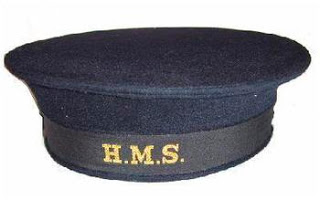
Interestingly, while some of the tallies (ribbons or bands) around sailors’ caps had “HMS Ship’s Name” on them, others simply said “HMS”. This was a wartime security precaution – an attempt to confound German agents or sympathizers. Strange that MI5 would have sent such a message to the Germans. Unless, of course, British sailors, safe in a British port, were permitted to wear tallies with their ship’s name.
Other Possible Transmission Sources
So, we have five messages, two of which likely emanated from SUMMER or TATE and three which have no known double-agent source.
Message 1 – a message that described industrial buildings and factories in Coventry prior to November 14, 1940. Josef saw this message after November 14 but the news of the Coventry bombing was still fresh in the papers. MI5 admitted that this message had no known connection to any Double Agent transmissions.
Message 2 – sent in a mixture of Swedish and English – likely from SUMMER about his visit to Grantham (although CELERY went in early November too).
Message 3 – a fairly generic message about road barricades – likely emanated from either SUMMER or TATE.
Message 4 – a message describing an aerodrome with man traps to prevent the landing of German aircraft. MI5 admitted that this message had no known connection to any Double Agent transmissions.
Message 5 – a message about ships in dry dock and ship names on sailor’s caps – MI5 thought this might be a SUMMER transmission from 24 December 1940 but, as mentioned above, it is unlikely Josef would have seen this particular transmission. He likely saw all five messages in mid to late November in Hamburg. Which means that this particular message is also not connected to a known agent transmission.
We are left with three possible scenarios out of this:
- MI5 didn’t do a very good search of their double-agent transmissions and missed the ones that would match 1, 4 and 5.
- Messages 1, 4 and 5 may have originated with Juan Pujol Garcia (later double agent GARBO). Garcia got himself recruited as a German spy and while supposedly based in England, was actually living in Lisbon. Using newspapers and travel books, Garcia sent bogus reports to Germany about his “spying” in England, without ever leaving the comforts of his Iberian home. His messages were so accurate that when MI5 learned of them, they panicked and thought there was a spy on the loose in England. Garcia used secret ink however, not wireless transmissions – so he is an unlikely candidate.
- Messages 1, 4 and 5 may have originated with a German spy unknown to MI5 – perish the thought! MI5 was quite confident, in late 1940 and early 1941, that they had scooped up all… or rather… most of the German agents.
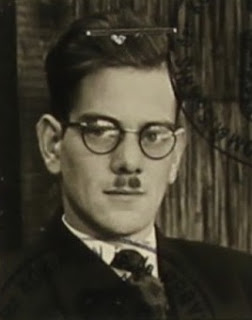
There was the notable exception of Engelbertus Fukken (Jan Willem Ter Braak) who landed near Milton Keynes in early November 1940. MI5 did discover his parachute, which he stuffed in a hedgerow rather than buried, and knew that at least one spy had eluded their clutches. Fukken settled in Cambridge and remained at large until committing suicide in an air raid shelter in late March 1941. Upon discovering his wireless transmitter, MI5 couldn’t decide if he had managed to successfully contact the Germans, or not. Could Messages 1, 4 and 5 have emanated from Fukken? The timeline would be about right, although he would have had to travel from Cambridge to Coventry within a few weeks of landing. Not outside the realm of possibility.
On the other hand… if one spy eluded capture, could there be another? Fukken committed suicide in a very public location, with his wireless transmitter conveniently deposited at Cambridge railway station’s Left Luggage counter. Could another spy have evaded MI5s capture and then committed suicide in a far less public location? There is always the intriguing Trow Ghyll skeleton mystery which leaves one wondering. While Yorkshire is quite a ways from Coventry and the normal stomping grounds of Germany’s spies… one does wonder. There is also the case of the Spy in the Attic, near Liverpool.
Perhaps the messages originated from a British-born spy, someone who didn’t need to parachute into England and risk capture. Perhaps some Nazi-sympathizer had a secret wireless transmitter with which they sent messages to Germany. This is a bit of a stretch and raises many questions. Where would the transmitter have come from? How would the Germans know on which frequency to listen for the transmissions? What sort of code would the agent have used that was known to both him/her and the Germans?
Which leads us to Double Agent, or is it Triple Agent or Quadruple Agent, SNOW, a Welshman who had been recruited by the German Abwehr and then MI5 and then the Abwehr… SNOW was a difficult agent to manage, for both sides. MI5 and the Abwehr always had doubts about whose side SNOW was really on… although some have said that SNOW was always on the side of SNOW! Could SNOW have sent some clandestine messages without MI5’s knowledge? CELERY (Walter Dicketts) was of the firm opinion that SNOW had another line of communication with the Abwehr (other than the wireless transmitter sanctioned by MI5 (West & Madoc, p.108). In March 1941, after SNOW’s trip to Lisbon, MI5 considered the possibility that he was communicating with the Abwehr via a means of which MI5 was unaware (West & Madoc, p. 168). It thus isn’t outside the realm of possibility.
Conclusion
We are left with another unsolved mystery, and one that likely haunted MI5 as well. At least two, and likely three of the messages, seen by Josef could not be traced to any known double agent. Who could have sent those messages? Were they from Engelbertus Fukken? SNOW? Or another, undiscovered German agent?
One last caveat is in order… this is all based on the assumption that Josef was telling the truth – something that is hard to establish with any degree of certainty. But if he did tell the truth, we have an intriguing mystery.
Sources
National Archives – Secret Service files – KV 2/25 94b, KV 2/26 100b and 103a
SNOW – Nigel West & Robert Madoc – p. 107-108, 168.
Double Agent Snow – James Hayward.
